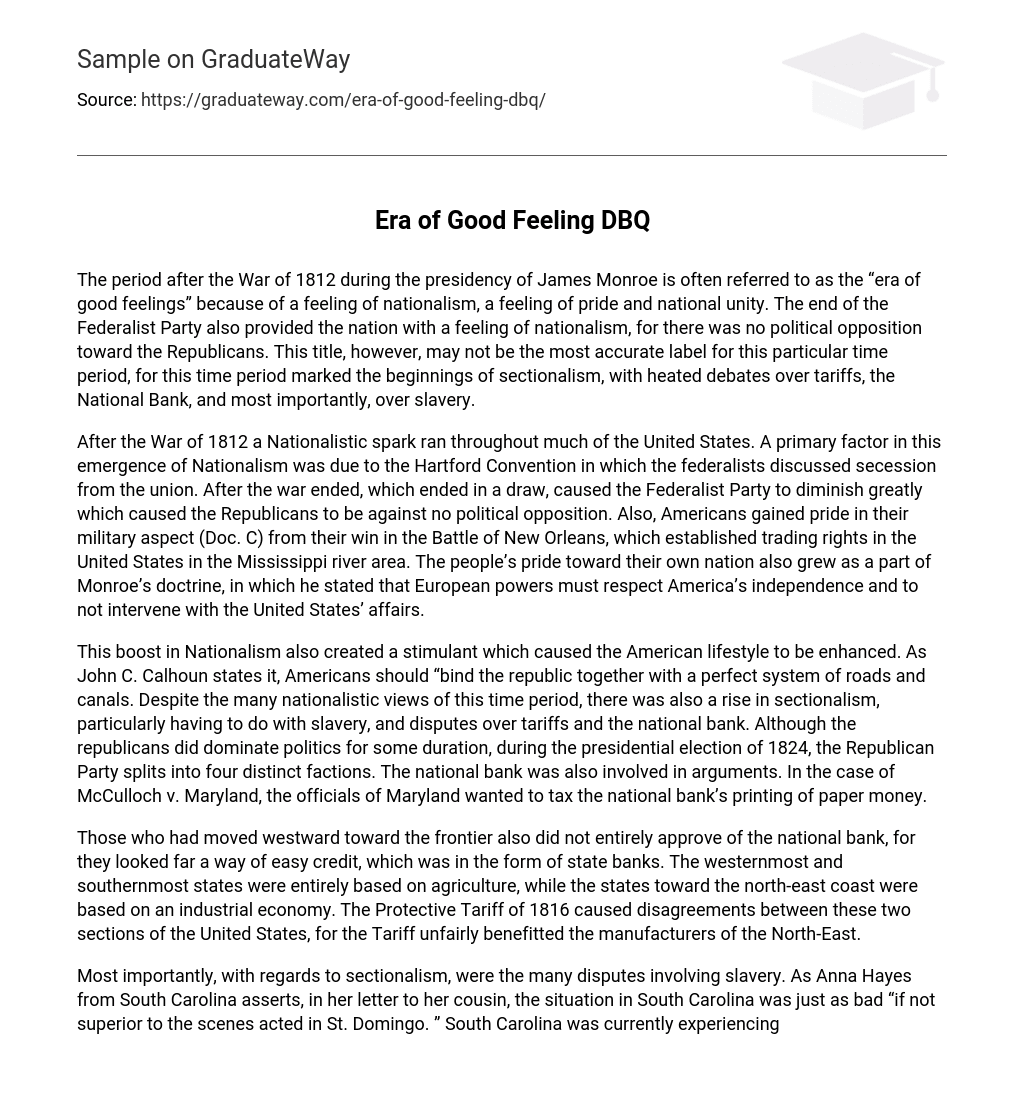The period after the War of 1812 during James Monroe’s presidency is commonly known as the “era of good feelings” due to a sense of nationalism and pride within the nation. Additionally, the absence of political opposition from the dissolved Federalist Party further enhanced national unity. Nevertheless, this title may not fully reflect the reality of this era, as it also marked the rise of sectionalism. Intense debates over tariffs, the National Bank, and most significantly, slavery, emerged during this time.
After the War of 1812, the United States experienced a surge of Nationalism. This was largely influenced by the Hartford Convention, where federalists discussed seceding from the union. The war’s inconclusive outcome led to a significant decline in the Federalist Party, leaving Republicans unchallenged politically. In addition, Americans took pride in their military victory at the Battle of New Orleans, which secured trading rights along the Mississippi River. Monroe’s doctrine further enhanced national pride, emphasizing that European powers should respect America’s independence and avoid meddling in its affairs.
This increase in Nationalism also led to an improvement in the American lifestyle. According to John C. Calhoun, Americans should “connect the republic with a well-designed network of roads and canals.” Alongside the various nationalistic perspectives during this period, sectionalism also rose, specifically regarding slavery and disputes over tariffs and the national bank. Although the Republicans held political power for a while, they split into four separate factions during the 1824 presidential election. The national bank was also a source of controversy. In the case of McCulloch v. Maryland, Maryland officials sought to tax the national bank’s printing of paper money.
The national bank did not receive full approval from those who had migrated westward towards the frontier. They sought alternative sources of credit, such as state banks. The western and southern states were predominantly agrarian, while the northeastern states had an industrial economy. Disagreements arose between these two regions due to the Protective Tariff of 1816, which unfairly favored the manufacturers in the Northeast.
Sectionalism was greatly influenced by the many disagreements regarding slavery. Anna Hayes, in a letter to her cousin, confirms that South Carolina was facing similar, if not worse, circumstances than those happening in St. Domingo. Slave revolts were causing significant problems in South Carolina and questioning the moral acceptability of slavery. This disagreement further heightened sectionalism among various regions of the United States.
John Randolph, who opposed the Tariff of 1816, argued that the Missouri Compromise, a simple geographical division, did not fully resolve the controversy surrounding slavery. Therefore, the title “The Era of Good Feelings” does not accurately depict this time period. Although there was a rise in nationalistic ideals, such as improving the union through internal improvements, sectionalism remained an underlying issue. Disputes concerning tariffs, the Bank of the United States, and especially slavery contradicted the notion of a harmonious era. Hence, “The Era of Good Feelings” is an incorrect label.





